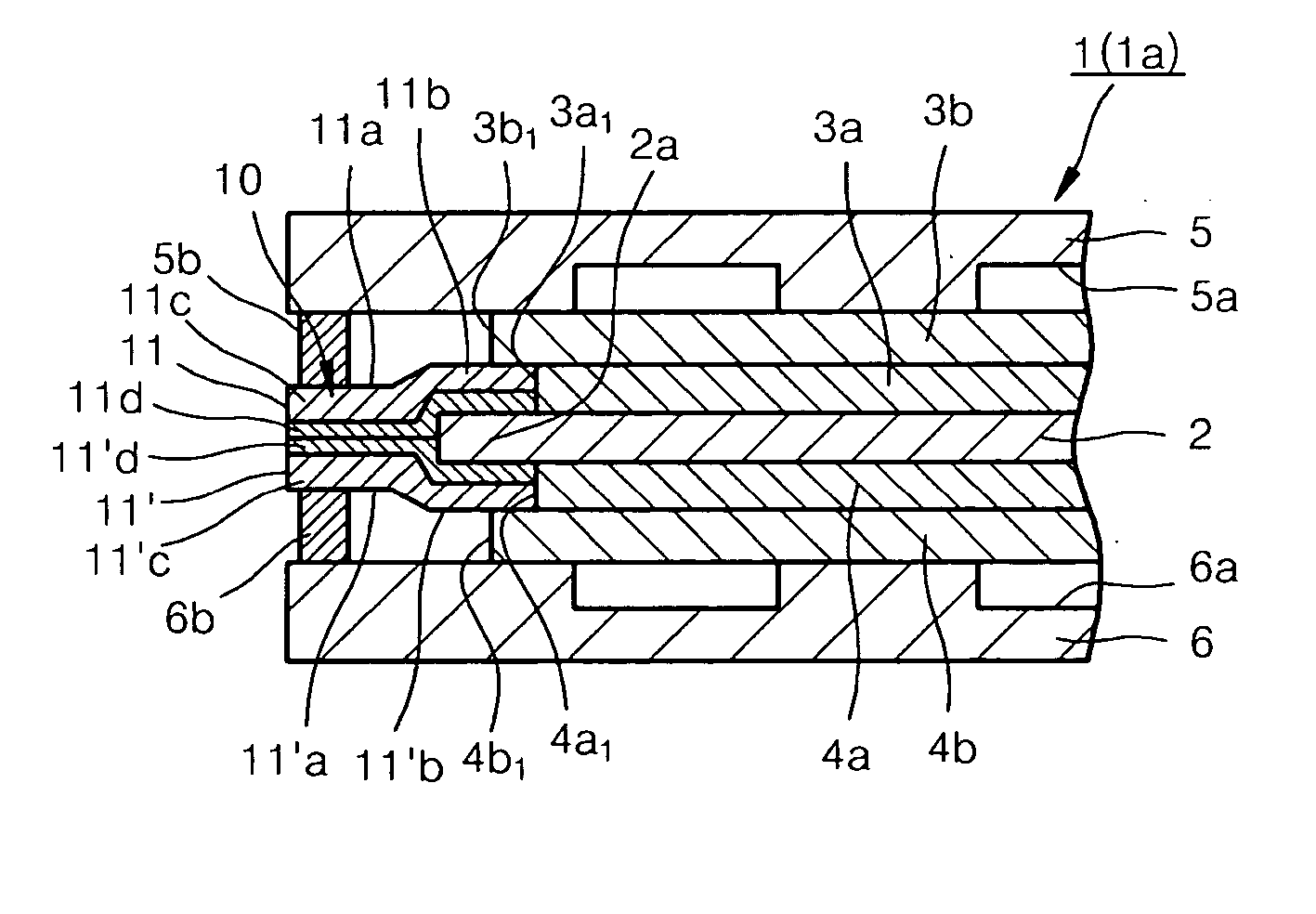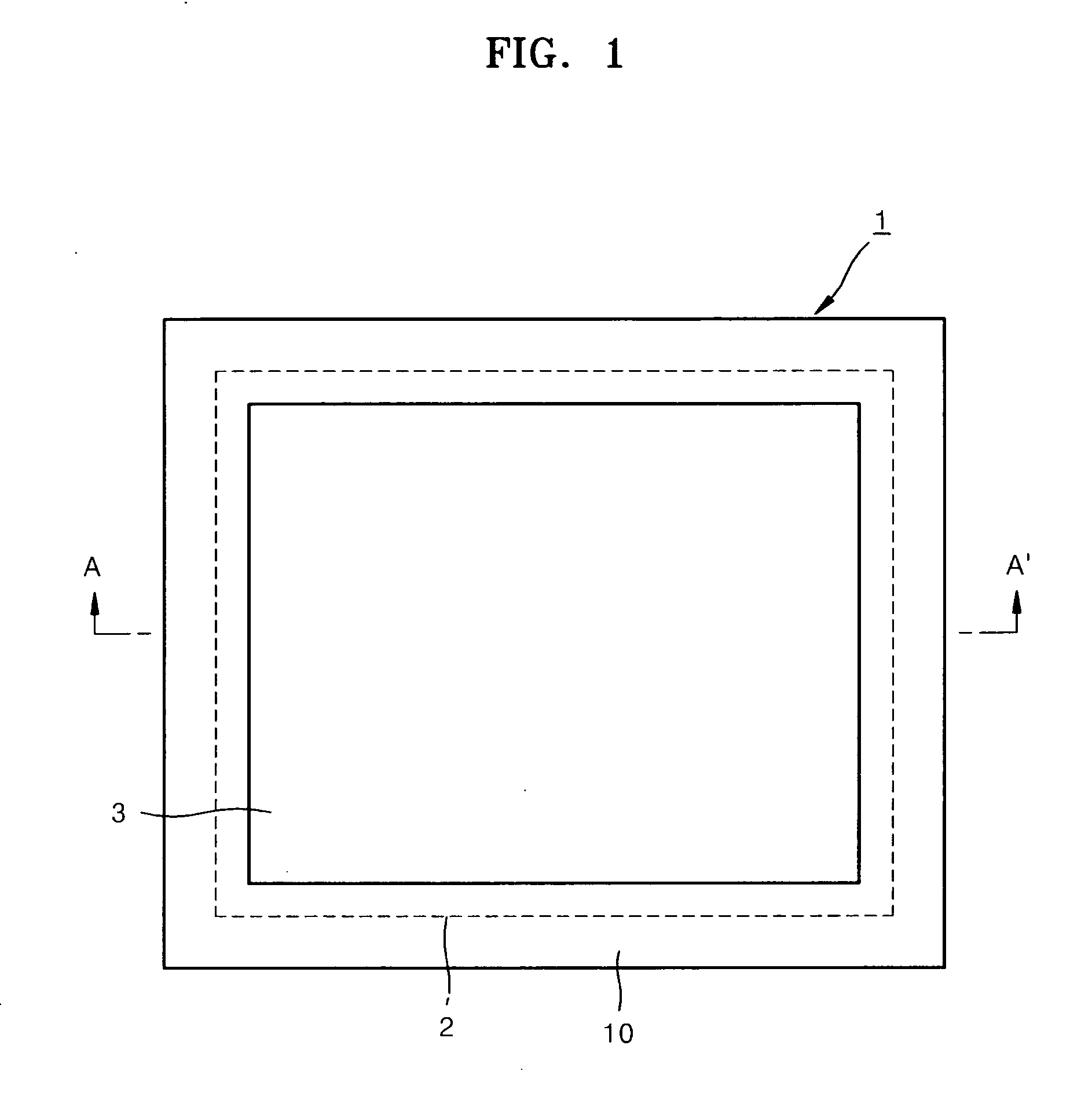Sealing member for fuel cell, fuel cell, and method of manufacturing the fuel cell
a technology of sealing member and fuel cell, which is applied in the direction of cell components, final product manufacturing, sustainable manufacturing/processing, etc., can solve the problems of inability to completely prevent gas leakage of oxygen gas and hydrogen gas, the possibility of breaking the polymer electrolyte membrane, and the overall safety is not guaranteed
- Summary
- Abstract
- Description
- Claims
- Application Information
AI Technical Summary
Benefits of technology
Problems solved by technology
Method used
Image
Examples
embodiments
Embodiment 1
[0083] To evaluate the sealing member according to the present invention, a power generation unit cell was manufactured in the following procedure.
[0084] First, a polymer electrolyte membrane in a gel state was obtained by soaking a polybenzimidazole film in 85% phosphoric acid. The doping rate of the phosphoric acid was 450%, and the thickness of the polymer electrolyte membrane was 75 μm. The polymer electrolyte membrane was a square shape having dimensions of 5.4 cm×5.4 cm.
[0085] Electrodes (Vulcan XJ-72 containing 30% of a Pt catalyst formed on carbon paper to a density of 0.5 mg / cm2) manufactured by E-TEK Co. were used as a fuel electrode and oxygen electrode. The fuel electrode and the oxygen electrode both have a square shape having dimensions of 5 cm×5 cm.
[0086] Square shaped (7 cm×7 cm) carbon separators having gas flow channels (grooves) were prepared as separators plates with gas flow channels. Also, current collectors and end plates were prepared. A groov...
embodiment 2
[0091] A unit cell of a fuel cell according to another embodiment of the present invention was manufactured as the same dimensions and materials as the embodiment 1 except that the thickness of each of the thermoplastic resin layers was 5 μm in the experimental embodiment 2.
embodiment 3
[0092] A unit cell of a fuel cell according to another embodiment of the present invention was manufactured with the same dimensions and materials as the experimental embodiment 1 except that the thickness of each of the thermoplastic resin layers was 10 μm in the experimental embodiment 3.
PUM
| Property | Measurement | Unit |
|---|---|---|
| Thickness | aaaaa | aaaaa |
| Length | aaaaa | aaaaa |
| Area | aaaaa | aaaaa |
Abstract
Description
Claims
Application Information
 Login to View More
Login to View More - R&D
- Intellectual Property
- Life Sciences
- Materials
- Tech Scout
- Unparalleled Data Quality
- Higher Quality Content
- 60% Fewer Hallucinations
Browse by: Latest US Patents, China's latest patents, Technical Efficacy Thesaurus, Application Domain, Technology Topic, Popular Technical Reports.
© 2025 PatSnap. All rights reserved.Legal|Privacy policy|Modern Slavery Act Transparency Statement|Sitemap|About US| Contact US: help@patsnap.com



